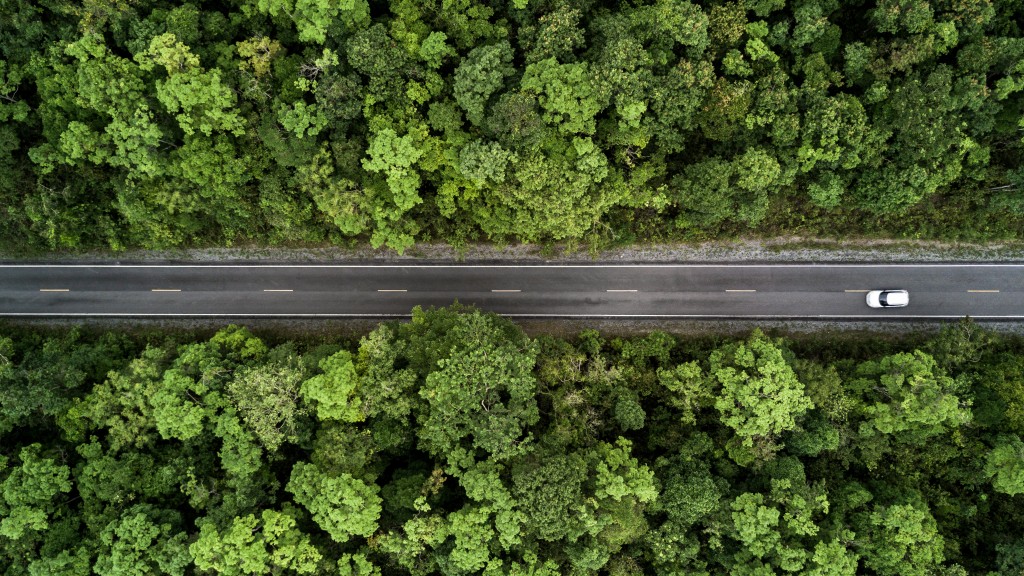Nowadays, food photography has become a crucial part of the food experience. With the rise of social media platforms like Instagram and Pinterest, aesthetic food pictures have become a way to share one’s culinary creations with others. Capturing the ideal shot of a dish can be difficult, but with the right tips, anyone can create food aesthetic photography.
Here, we will explore some techniques for taking beautiful food photos, including lighting, composition, props, equipment, and editing. Whether you are a pro photographer or a food blogger looking to improve your images, these tips will help you take your food photography to another level and capture the perfect aesthetic food shot.
Lighting and Composition
From composition to color to lighting, many elements go into capturing an aesthetically pleasing image of your meal. By taking some time to consider these aspects when photographing a dish, you can create stunning photos that will leave your audience drooling!
Lighting and composition are two essential elements of food photography. Proper lighting can make all the difference in how your food looks in photos, while composition helps to create a visually appealing image.
Natural light is the ideal choice for food photography in most cases. Shooting near a window or outside during the day can provide soft, diffused light that showcases the colors and textures of your dish. However, if you don’t have beautiful natural light, use artificial lights such as a ring light or a softbox to achieve a similar effect.
In terms of composition, consider the placement of your food in a frame. The rule of thirds is a useful guideline for composition, where the frame is divided into a 3×3 grid, and important elements are placed along the lines or at the intersections. This can help to make a balanced and visually appealing image.
A few examples of great food photos with strong lighting and composition include shots taken from above, highlighting texture or garnish, or creative close-ups that capture delicious details. For instance, in a photo of a bowl of soup, the soup might be placed in the center of the frame with a piece of bread or a spoon placed along the grid line for a balanced composition. The lighting might be soft and diffused, showcasing the colors and textures of the soup, with a rustic wooden bowl and a few scattered herbs or spices serving as complementary props.
Equipment and Props
In food photography, different types of cameras and lenses can be used to achieve different results. Generally, a DSLR or mirrorless camera with manual controls is preferred to have better control over the settings. Here are the most used types of cameras and lenses in food photography:
- Full-frame camera: This camera is great for capturing high-quality, detailed images with a shallow depth of field.
- Crop-sensor camera: These are smaller and cheaper than full-frame cameras. They can still produce high-quality images but with a slightly deeper depth of field.
- Macro lens: It’s an ideal lens for capturing close-up shots of food, highlighting details like the texture of the food or the steam rising from a dish.
- Wide-angle lens: Great lenses for capturing the entire scene, such as a table setting with multiple dishes.
- Zoom lens: These lenses allow for flexibility in framing shots from a distance, without needing to move the camera physically.
Additionally, props play a huge role in creating an interesting and appealing food photo. From bowls and plates to utensils and background materials such as fabrics or tablescapes, props go beyond simply making up part of the composition.
They provide texture and color contrast and can be used to suggest an atmosphere or mood for the photo. Simple items like a wooden spoon or colorful napkins can make all the difference in making a food photo more memorable and eye-catching.
Styling and Presentation
A beautiful photo will make all the difference in whether or not your dish gets noticed and appreciated online. A great food photo starts with a well-composed shot. Presentation is key – how you style your food will immensely impact how the final photo looks. Using color, texture, and shape together to create a harmonious composition will help ensure that your food photos look magazine-worthy.
There are many techniques available when styling food for photography. Applying contrasting colors side by side can draw attention to certain elements of the dish and highlight its beauty. Utilizing garnishes such as herbs and spices with different textures helps make the food more interesting. And don’t forget about shapes – playing with them can add extra depth to the photo and give it more definition.
No matter the techniques you choose keep in mind that styling and presenting food for photography is all about finding balance. Create eye-catching aesthetic food by balancing these three elements – color, texture, and shape.
Post-Processing and Editing

Post-processing and editing are essential in enhancing the final result of a food photo. It is a way to enhance the beauty, color, and composition of your images while maintaining a natural aesthetic. Post-processing and editing involve:
- Adjusting white balance
- Brightness
- Contrast
- Sharpening details
- Removing unwanted elements in the image (like blemishes or background distractions)
- Cropping for better framing and composition
- Fixing exposure problems that were missed during shooting (e.g., overexposed highlights, underexposed shadows)
Maintaining a natural and realistic look in edited food photos is important to avoid creating an unrealistic or artificial image. To give food photos an appealing look without making them seem over-edited or artificial, food photographers use post-processing tools like curves and luminance masks to selectively adjust different parts of the photograph according to their needs.
Examples of before-and-after edited food photos showcase how post-processing and editing can bring out the beauty of a food photo and help keep the natural look of dishes intact. If photographers do some exposure and white balance adjustments, the after photo won’t appear dark and cool. However, adjusting the brightness and warmth will make the food look more inviting and delicious.
The colors appear dull and washed out? With a bit of adjustment, the colors should make the food look more vibrant and tasty. If the food appears messy and unappealing, you should remove the imperfections to make the food look more appetizing and visually appealing.
Post-processing and editing are crucial in enhancing the final result of a food photo. However, it is important to maintain a natural and realistic look to avoid creating an unrealistic or artificial image.
Challenges and Solutions
From food preparation and timing to plating and styling, several obstacles need to be overcome. Preparing food for photography can be challenging, as some foods may wilt or lose their appeal quickly. A solution to this is to prep as much as possible beforehand, ensuring that the food is cooked or arranged in a way that will last long enough to capture the perfect shot.
Timing
Timing is crucial in food photography, especially when working with hot or cold dishes. It is important to work quickly and have everything set up beforehand to ensure that the food is captured at its best. A solution to this is to have all the equipment, props, and lighting set up beforehand and a team of assistants or a food stylist to help with the preparation and plating.
Plating

Plating can greatly impact the final result of the shot, especially when working with certain dishes that may not hold their shape or structure. A solution to this is to use props and styling techniques to help enhance the dish’s appearance and structure. This involves using toothpicks to hold food in place or garnishing with herbs or sauces to add color and texture.
Plan Your Photo
Planning is essential for successful food photography. This includes preparing ingredients in advance and having a plan for how you will plate your dish. Additionally, consider what type of food aesthetic you want your photo to have. Do you want the focus on texture or color? Once these elements are established, make sure the lighting is just right before taking the shot!
It might take several attempts, but with patience and practice, you can create stunning food photos worthy of any Instagram feed! With a bit of creativity and attention to detail, achieving the perfect food photo isn’t as difficult as it may seem. So, you need basic knowledge and the right attitude to get started.
Ethics and Authenticity
Food photography has become a major aspect of food culture in recent years. While food photography can serve as an art form and a means of advertising, it also raises ethical concerns about how the food is being represented and whether the images accurately depict the food in question.
There is a growing emphasis on the importance of authenticity in food photography, particularly in accurately representing the food’s cultural and historical context.
What Photographers Do Wrong?
There is an ethical responsibility in food photography. When capturing images of food, photographers must be mindful not only of the visual impact but also of how their photos represent the dish accurately. Controversies surrounding food authenticity have arisen in recent years, with some restaurants accused of photoshopping their dishes or otherwise misrepresenting what customers will be served.
Some photographers use digital editing software to manipulate images of fast food to make them look more visually appealing than it actually is. This has led to concerns about the deceptive nature of these images and their potential to mislead consumers. Ensuring authenticity should be at the top of every photographer’s list when taking pictures for a restaurant, as it is essential for honest representation and customer satisfaction.
Another ethical concern is the representation of food in a culturally insensitive way. This can include appropriating traditional dishes or ingredients without proper context or permission or perpetuating harmful stereotypes about certain cultures or cuisines.
Promoting Greater Authenticity and Ethics

There have been efforts to promote greater authenticity and ethical standards in food photography. Some food bloggers and photographers have taken a more naturalistic approach to their work, avoiding excessive manipulation of the images and focusing on the beauty of the food itself. Others have emphasized the importance of cultural context and sensitivity in representing different cuisines. Furthermore, making sure that all modifications made to the photographs are clearly labeled as such can help avoid any potential confusion or controversy.
By following these guidelines, photographers can create beautiful and ethical images that accurately represent both the dish and its ingredients. This will ensure customer satisfaction and maintain a high standard of authenticity in food photography. It will allow food lovers to enjoy their meals without the worry of misrepresentation.
So when you’re taking pictures of your next meal, make sure you keep ethics and authenticity in mind. After all, an honest representation is worth far more than a few extra likes on Instagram!
Conclusion
The digital age has provided us with so many opportunities to explore our creative side when it comes to capturing food photos. Photography offers an amazing opportunity to capture the perfect food aesthetic shot. With the right camera and lighting setup, one can achieve remarkable results that will tantalize anyone who views them.
You can truly unlock the full potential of your pictures. Use a few simple tweaks, such as adjusting angles, taking multiple shots from different perspectives, and making small edits in editing software.
Keep in mind that bright and vibrant hues can make dishes look tasty, while muted tones can give photos a calming aesthetic. Lighting is also very important as it determines the mood of your photo. Styling is essential for making food pop out of the frame, and don’t forget to use props to bring the dish to life and enhance its overall appeal.
So, if you want everyone talking about your food, make sure it looks as good as it tastes!




